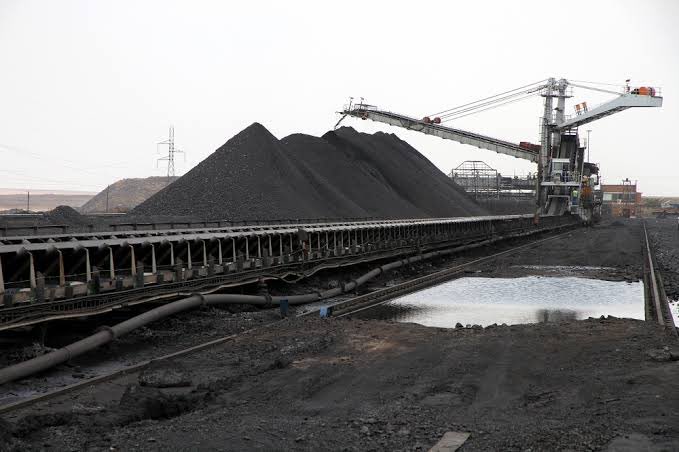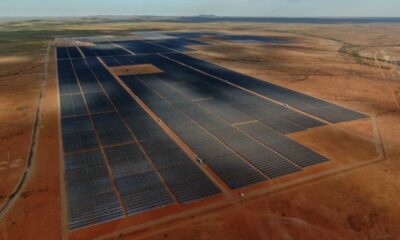News
From Ruin to Revival: How Old Coal Mines Could Breathe New Life into South Africa’s Dying Towns

Hope Rises from the Ashes of Coal Country
For decades, the coalfields of Mpumalanga powered South Africa’s economy. But as the country marches toward a greener future, many of those once-thriving mining towns are fading into silence. Now, a new University of Cape Town (UCT) study offers a flicker of hope in what has long felt like a story of irreversible decline.
Instead of seeing South Africa’s 6,000 abandoned mines, including over 300 coal sites as scars on the landscape, economist and UCT PhD candidate Nicola Wills sees something else: potential. Her research suggests that with the right approach, these old mines could become catalysts for sustainable agriculture, renewable energy, and new local industries.
And for communities like those in Mpumalanga, that shift couldn’t come soon enough.
The Hidden Cost of Coal: Environmental Risks and Lost Livelihoods
South Africa’s coal mines didn’t just dig deep into the earth, they also dug deep into communities. While they generated electricity and jobs, they also left behind acid mine drainage, polluted water systems, land degradation and greenhouse gas emissions.
And now, with the coal sector in decline, towns built around mines face economic collapse, as the income that once sustained them dries up.
The problem is, those same communities are often excluded from decision-making about what happens next.
“We’ve carried the burden of coal for decades,” says Sabelo Mnguni, national coordinator of the Mining Affected Communities United in Action (Macua). “Now that rehabilitation is on the table, we must be part of the solution, not sidelined from it.”
A New Vision: Farming on Old Mines
Wills’ research brings attention to real-world examples where rehabilitation is already producing results.
Take the Mafube water reuse project, which ran from 2017 to 2020. It used treated mine water to irrigate virgin land and grew high-yield maize at 14.5 tonnes per hectare, nearly double the yield of traditional dryland farming.
Then there’s the Wonderfontein winter wheat project (2021), which proved that mine-impacted soil, paired with managed water reuse, could outperform even untouched land, all while staying within safe agricultural standards.
“These aren’t just pilot studies. They’re proof that land damaged by mining can be healed and made productive again,” Wills said. “It’s a game-changer for sustainable development.”
Beyond Crops: Biofuels, Hemp and Clean Energy
Mpumalanga isn’t stopping at maize and wheat. The province has teamed up with Coaltech and the Mpumalanga Green Cluster Agency to explore other innovative land uses, such as biofuels, industrial hemp, and solar energy farms.
This could help diversify the local economy, offering alternatives to coal without abandoning the communities that depended on it.
Mining expert David van Wyk says there’s another underappreciated opportunity in mine rehabilitation: water treatment. As disused mining shafts fill up, there’s a growing risk of acid mine water seeping into urban water systems and causing dangerous sinkholes.
But if treated properly, that same water could be used for industry, creating yet another job-generating activity in towns desperate for economic lifelines.
A Just Transition or Just Talk?
Despite these opportunities, the road to a “just transition” remains rocky. While government has earmarked R181.9 million for mine rehabilitation, there’s concern that without careful planning, the funding will bypass coal-heavy areas like Mpumalanga, where the need is greatest.
“Financing and access are still major barriers,” says Mnguni. “And if communities aren’t involved in designing these projects, we’re simply repeating the mistakes of the past.”
For Macua, rehabilitation must be community-led, with training, ownership and local job creation as core goals, not afterthoughts.
A Chance to Right Historic Wrongs
This shift isn’t just about fixing environmental damage. It’s also a chance to address the deep inequalities left behind by South Africa’s extractive industries.
For too long, mining profits left the country while local people bore the cost. Rehabilitation, if done right, could help flip that script, giving towns new tools to rebuild from within.
The science is there. The pilot projects work. What’s needed now is political will, community trust, and coordinated investment to turn this vision into a nationwide strategy.
South Africa’s abandoned coal mines might look like endings. But as new research shows, they could just as easily be beginnings.
With smart planning, genuine community involvement, and targeted investment, these sites could transform into the next chapter of South Africa’s green economy one where towns rise again not through extraction, but through regeneration.
{Source: The Citizen}
Follow Joburg ETC on Facebook, Twitter , TikTok and Instagram
For more News in Johannesburg, visit joburgetc.com



























